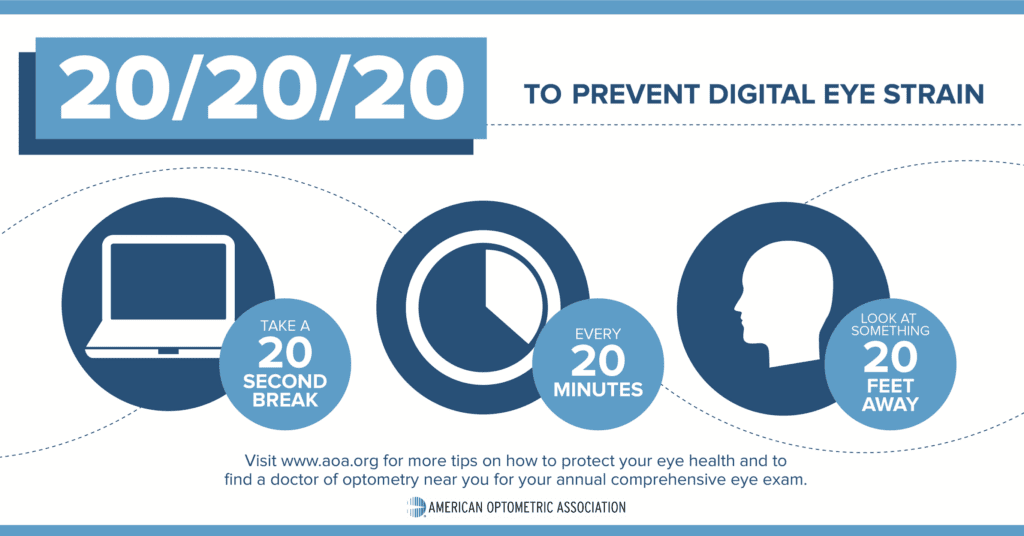It’s easy to assume that workplace eye hazards only apply to industrial, medical, or lab related fields, but the reality is that desk jobs also pose a risk to eye safety.
According to the American Academy of Ophthalmology, the average American worker spends 7 hours a day on a computer or hand held device, which can lead to vision related problems such as Digital Eye Strain. The reason? Viewing a computer or digital screen is different than reading a printed page. Often the letters on the computer or handheld device are not as sharply defined, the level of contrast to the background is reduced, and the presence of glare on the screen may make viewing difficult, which in turn makes your eyes work harder.
Digital eye strain can be subtle and produce seemingly unrelated symptoms. Signs and symptoms include:
- Sore, tired, burning or itching eyes
- Watery or dry eyes
- Blurred or double vision
- Headache
- Sore neck, shoulders or back
- Increased sensitivity to light
- Difficulty concentrating
- Feeling that you cannot keep your eyes open
Think you’re suffering from Digital Eye Strain? Contact our office and request an appointment at one of our locations. Call 516-785-3900 (Wantagh office) or 516-541-4141 (Massapequa office) to schedule an appointment.
To help alleviate digital eye strain, experts say to follow the 20-20-20 rule; take a 20-second break to view something 20 feet away every 20 minutes.

Simple additional lifestyle changes to your daily routine can greatly reduce your digital eye strain. Try the following tips for a healthier, more refreshed vision.
- Adjust the lighting. When watching television, keep the room softly lit. When reading printed materials or doing close work, try to position the light source behind you and direct the light onto your page.
- Limit screen time. This is especially important for children, who may not make the connection between extended viewing, eyestrain and the need to rest their eyes regularly.
- Choose the right eyewear for you. If you need glasses or contacts and work at a computer, consider investing in glasses or contact lenses designed specifically for computer work (blue light glasses). By wearing blue light glasses, you can help increase screen contrast, making it easier to focus and subsequently reduce eye strain.
- Blink often to refresh your eyes. Many people blink less than usual when working at a computer, which can contribute to dry eyes. Blinking produces tears that moisten and refresh your eyes. Try to make it a habit to blink more often when looking at a monitor.
- Adjust your monitor. Position your monitor directly in front of you about an arm’s length away so that the top of the screen is at or just below eye level. It helps to have a chair you can adjust too.
- Use a document holder. If you need to refer to print material while you work on your computer, place it on a document holder. Some holders are designed to be placed between the keyboard and monitor; others are placed to the side. Find one that works for you. The goal is to reduce how much your eyes need to readjust and how often you turn your neck and head.
- Adjust your screen settings. Enlarge the type for easier reading. And adjust the contrast and brightness to a level that’s comfortable for you.
Source: https://www.mayoclinic.org/diseases-conditions/eyestrain/diagnosis-treatment/drc-20372403


